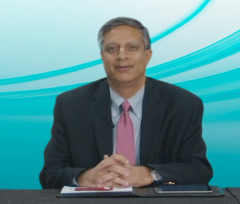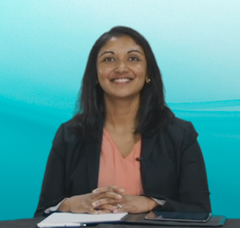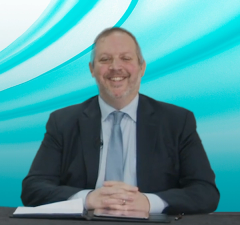
Defining High-Risk Multiple Myeloma
Experts discuss how they define frail and high-risk patients with multiple myeloma and their treatment approaches for these patient populations.
Episodes in this series

Sagar Lonial, MD: I’m going to ask Dr Kaufman to give us a little more detail on one of the things that did strike me regarding the patients older than 75 [years] or even 80 [years] who were in the MAIA [clinical trial (NCT02252172)]. One of the things that I noticed when I read the paper was that a third of the patients were over the age of 75 and a significant fraction were over 80 in MAIA. That isn’t a typical older, frailer trial where we see patients enrolled over the age of 80. When you see somebody who’s aged 80 to 82, how do you use that MAIA subset analysis to decide whether you’re going to do a triplet or doublet?
Jonathan Kaufman, MD: From my perspective, regarding the data of retrospectively looking back at frailty in the patients who were treated in MAIA—they used the combination of age, performance status, and comorbidities—while frailty was still important overall in outcomes, frail patients, no matter what arm within the treatment, did worse than non-frail patients. The frail patients who were treated with daratumumab—Rd [lenalidomide, dexamethasone] vs Rd did better. When I see a frail patient, the data are supportive, and then I need to think: How am I going to treat this patient and get them through this regimen? Do I need to start with a lower dose of dexamethasone? Do I need to start with a lower dose of lenalidomide to get the benefits out of that regimen?
Sagar Lonial, MD: Yes. Dr Joseph, one of the questions that comes up, and you alluded to this earlier in the discussion as well, is that there’s a meta-analysis that looks at high-risk patients treated with an anti-CD38 antibody that demonstrated some benefit. Why don’t we take a step back and say how we define high-risk disease in 2022. Because that’s obviously a moving target. There have been a number of analyses from our data set and others trying to tease this out.
Nisha Joseph, MD: Yes. For the most part, we follow the revised ISS [International Staging System], staging in terms of cytogenetics, so patients with translocation t(4;14) or t(14;16) or deletion 17p. They’re not in R-ISS and not something we routinely look for, but we’d also classify translocation t(14;20) patients as high risk. At our center, we also look at complex karyotypes, so multiple abnormalities on chromosome analysis as well. Outside of cytogenetics, disease biology features, such as extramedullary disease, circulating plasma cells, and then behaviorally primary refractory disease we’d think of as high risk as well.
When we think about how we approach that subset of patients, I referenced this earlier. I tend to use a carfilzomib-based induction strategy, as in FORTE [NCT02203643]. The role of transplant is particularly important in this high-risk population. Then I follow that with risk-adaptive maintenance strategy, which would be a triplet. I’ve been using carfilzomib-based triplet strategies in the maintenance space as well.
You referenced the meta-analysis looking at daratumumab in high risk, and that showed a benefit of daratumumab in that population. In general, some of the data have been challenging because there are small numbers of patients on those studies and they were seeing marginal benefit. It’s an evolving area. I’m certainly open to discussion. It’s not something that I’m routinely applying in practice. I’m still using carfilzomib-based strategies in those folks.
Sagar Lonial, MD: OK. Do either of you want to [chime in]?
Jonathan Kaufman, MD: Yes. The addition I’d use, and we’ve debated this for a long time, is adding 1q to our high risk, and 1q isn’t simple. Certainly, if you have 4 or more copies of 1q, those patients are considered high risk. As far as if you have a single additional copy of 1q, our former trainee Timothy Schmidt, MD, looked at these data and recently looked at the ECOG-ACRIN Cancer Research Group study [ENDURANCE; NCT01863550]. It tells us that those patients who have any 1q abnormality, even 1 additional 1q, need to be treated optimally. For young and healthy patients, we consider the approach of optimal induction therapy, early transplant, and risk-adaptive maintenance. Limiting any of those decreases their outcome.
Sagar Lonial, MD: Refresh my memory, because I’m misremembering the data. My recollection early on was that with 4 or more copies of 1q in isolation, perhaps the impact wasn’t the same as with other high-risk features. Correct me if I’m wrong.
Jonathan Kaufman, MD: With 4 or more, if you have 4, it’s as if you have a deletion 17p. If you have 3 copies of 1q and another in deletion 17p or t(4;14), that’s bad. But there was a question of if you have 1 additional copy of 1q. We saw from ENDURANCE that patients who had 1q did poorly, but ENDURANCE didn’t have a transplant group. We think that if you have a single copy of 1q—we saw this with FORTE—getting that transplant is critical. If we have to call them high risk to make sure everybody knows that they’ll go to transplant, then that’s what we need to do.
Transcript edited for clarity.
Newsletter
Stay up to date on recent advances in the multidisciplinary approach to cancer.






















































































